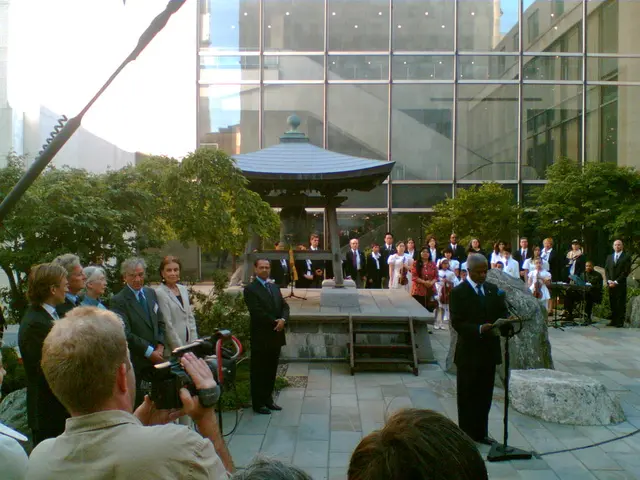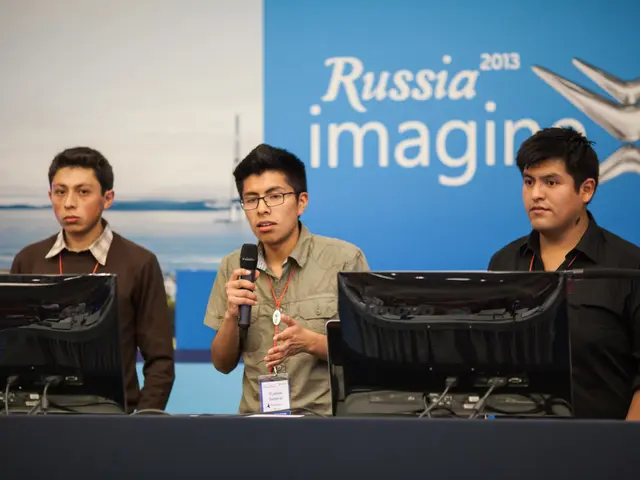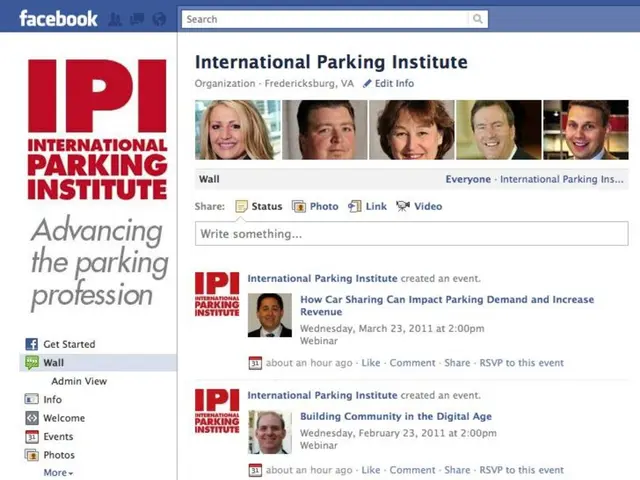Managing Artificial Intelligence-Generated Misinformation in California: Balancing Free Speech, Election Integrity, and Legislation
California's ambitious legislative effort to curb the use of deepfakes in political advertisements has faced significant legal and practical obstacles, underscoring the complex challenges of strike a balance between election integrity and free speech in the digital age.
The most salient example of these impediments is California's Assembly Bill 2839 (AB 2839), a bill aimed at restricting the distribution of AI-generated content that could mislead voters. However, the bill's broad scope and potential implications for free speech have led to its blocking, sparking heated debate on the delicate balance between protecting election integrity and preserving constitutional rights.
The Proposed Legislation: AB 2839
Signed into law by Governor Gavin Newsom in September 2024, AB 2839 sought to prohibit the distribution of "materially deceptive audio or visual media of a candidate" within 120 days before an election and 60 days after. Large online platforms would have been required to implement procedures for identifying and removing such content, as well as providing disclaimers for inauthentic material during election periods.
However, on October 3, 2024, U.S. District Judge John A. Mendez temporarily blocked the law, citing First Amendment concerns. This decision serves as a testament to the daunting challenges faced by legislators when attempting to regulate AI-generated content in political discourse.
Key Challenges
First Amendment Concerns
Critics argue that AB 2839's ultimate goal—to protect voters from deception—potentially infringes upon protected speech, particularly in cases where humor or the free exchange of ideas may be misconstrued as deceptive. Judge Mendez's ruling highlighted that even false and misleading speech is protected under the First Amendment, making it challenging to regulate political expression without violating constitutional rights.
Navigating this nuanced landscape will require a comprehensive approach that can effectively target malicious deepfakes without impinging on core constitutional protections.
Implementation Difficulties
Defining what constitutes "materially deceptive" content presents a significant challenge. The subjective nature of this determination could lead to over-censorship, as platforms might err on the side of caution to avoid legal repercussions. This ambiguity raises concerns about the potential for abuse and the suppression of legitimate political discourse.
Technological Limitations
Advances in AI technology make it difficult for legislation to keep pace with new developments. The constantly evolving nature of deepfake capabilities means that laws may quickly become outdated or ineffective. This technological arms race makes it difficult for legislation to adapt to new AI techniques while remaining specific enough to be enforceable.
The democratization of AI tools also means that the creation of convincing deepfakes is now accessible to a wider audience, imposing challenges on enforcement efforts.
Platform Responsibilities
Requiring large online platforms to implement state-of-the-art procedures for identifying and removing deceptive content raises concerns about the feasibility of such measures and the potential for overreach in content moderation. Critics argue that these responsibilities could lead to unintended censorship and limit the free flow of information during critical election periods.
This shift of responsibility to platforms also raises questions about the appropriate role of private companies in moderating political speech. Unintended consequences could dampen legitimate political discourse, as platforms might opt to remove content preemptively rather than risk violating the law.
Broader Implications
California's attempt to regulate deepfakes in political advertising has shed light on the broader issues at the intersection of technology, law, and democracy. As AI continues to advance, the potential for its misuse in political contexts grows, posing a threat to the integrity of democratic processes. However, attempts to regulate this technology must carefully navigate the fundamental principles of free speech that underpin democratic societies.
To address this deepfake challenge, a multifaceted approach is necessary:
- Continued Investment in Technological Solutions: Ongoing research and development in deepfake detection technology and authentication methods for digital content.
- Enhanced Public Awareness: Empowering individuals to identify and question potentially misleading content through education on critical thinking and digital literacy.
- Advanced Legal Frameworks: Developing more refined legislation that can effectively target malicious uses of deepfakes without infringing on protected speech.
- Collaborative Efforts: Facilitating cooperation between tech companies, legislators, and civil society organizations to develop comprehensive strategies for addressing the deepfake challenge.
- International Cooperation: Given the global nature of online content, effective regulation may require coordination across jurisdictions.
The Path Forward
Navigating the complexities of regulating deepfakes in political advertising will require innovative solutions. Potential approaches going forward may involve:
- Focused Legislation: Laws that are tailored to address specific types of deceptive content without infringing on protected speech.
- Disclosure Requirements: An emphasis on mandatory disclosures for AI-generated content in political ads, allowing voters to make informed decisions.
- Addressing Platform Design: Exploring modifications to tech platforms to better combat misinformation without infringing upon free speech.
- Federal Action: Federal legislation that provides a more unified approach to regulation, allowing for a consistent approach across regions.
California's attempt to regulate deepfakes serves as a case study in the difficulty of balancing technology regulation, free speech protections, and electoral integrity. As AI continues to advance, addressing the deepfake challenge will require ongoing efforts to adapt legal frameworks, improve technological solutions, and enhance public understanding of digital media. This process underscores the need for a thoughtful, collaborative approach that can effectively mitigate the risks posed by deepfakes while preserving the fundamental principles of free expression in a democratic society.
- The temporary blocking of California's Assembly Bill 2839 (AB 2839) by U.S. District Judge John A. Mendez highlights the increased complexities of policy-and-legislation in managing AI-generated content, particularly as it relates to political discourse, due to First Amendment concerns.
- As the democratization of AI tools continues to increase the potential for deceptive deepfakes in political news, legislators must carefully navigate the delicate balance between striking a balance between technology, policy-and-legislation, politics, and general-news to protect the integrity of democratic elections without undermining free speech protections.







